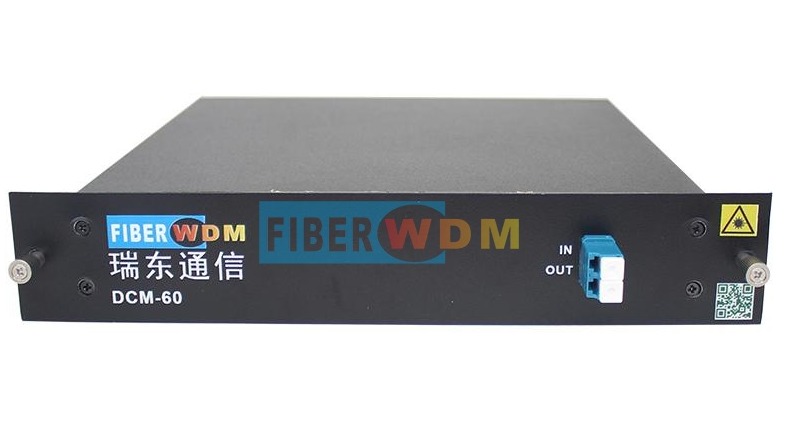DCM- Dispersion Compensation Module
June 05 , 2024

In fiber communication, optical pulses extend due to dispersion and tend to overlap with adjacent pulse periods. This causes interference between adjacent bits and leads to a high BER.At a high bit rate equal to the pulse width, the bit error rate (due to dispersion) will become too large.The dispersion compensation module (DCM) (also known as the dispersion compensation unit, DCU) contains the optical fiber roller with the dispersion negative slope,with the slope compensation function, it can compensate the wide band dispersion and dispersion slope of the standard single-mode optical fiber (G.652) in the C band, so as to optimize the residual dispersion of the system.It is based on a mature and reliable optical fiber process, which can improve the performance of the optical transmission system. The dispersion range at 1550nm wavelength can reach from-10 to-2100ps/nm, and can provide the central wavelength and dispersion of products with special requirements.
Dispersion compensation module (DCM) is mainly used for DWDM network, also can be said to be mainly used for long-distance network.DCM is deployed everywhere in the network, and modules can easily plug into fiber links because it has fiber connectors for input and output.Insertion loss can be compensated with a fiber optic amplifier. We also often see that the dispersion compensation modules tend to be placed between two fiber amplifiers.
The main component of DCM is DCF, and the dispersion compensation fiber (DCF) is a large negative dispersion fiber.It is a new type of single mode optical fiber designed for the 1.3μm standard single mode optical fiber.In order to adopt WDM/EDFA technology, the working wavelength of the optical fiber must be changed from 1.3μm to 1.55μm, and the dispersion of the standard optical fiber at 1.55μm wavelength is not zero, but positive (17-20) ps/(nm·km), and has positive dispersion slope, which must be added to make dispersion compensation to ensure that the total dispersion of the whole optical fiber line is almost zero, so as to realize high speed, large capacity and long distance communication.
The customer uses the 10G SM 1550nm ZR 80KM optical module, because the actual optical cable distance reaches 120KM, resulting in the optical module can not work normally. In this case, there are two solutions,as follows:
1) In the middle position of the line, increase the OEO, regenerate the optical signal, to achieve the rebirth and recovery of the optical signal, but the disadvantage is that the middle node needs power supply, in fact, it is difficult to find the appropriate position.
2) FiberWDM provide high performance, high reliability EDFA amplifier, can directly amplify the signal at both ends of the room, with FiberWDM passive DCM optical signal compensation, can perfectly solve the user's long distance 120KM transmission needs. This scheme has low cost, no need to find intermediate nodes, and save cost. The application diagram is as follows:

FiberWDM’s DCM module provides a high level of compensation while maintaining lower planar insertion losses and lower latency. When working with the EDFA of FiberWDM, DCM provides a simple, reliable and cost-effective long-distance transportation solution that enables the signal without regeneration.